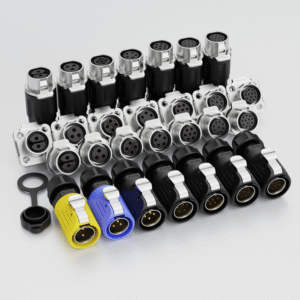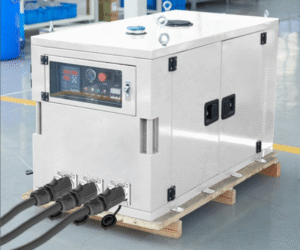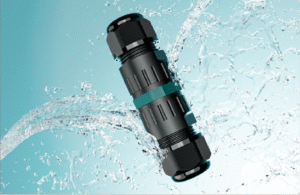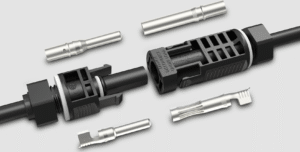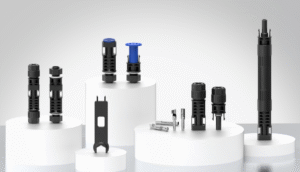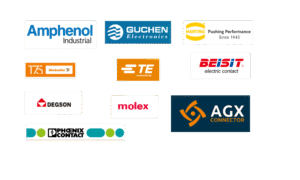Selecting the wrong IP rating can destroy your outdoor equipment in just one rainy season – here’s how to make the right choice.
Quick Answer: For basic garden lighting, choose IP44 minimum. For pressure washing areas or heavy rain exposure, select IP65. For underwater applications, an IP68 rating is essential.
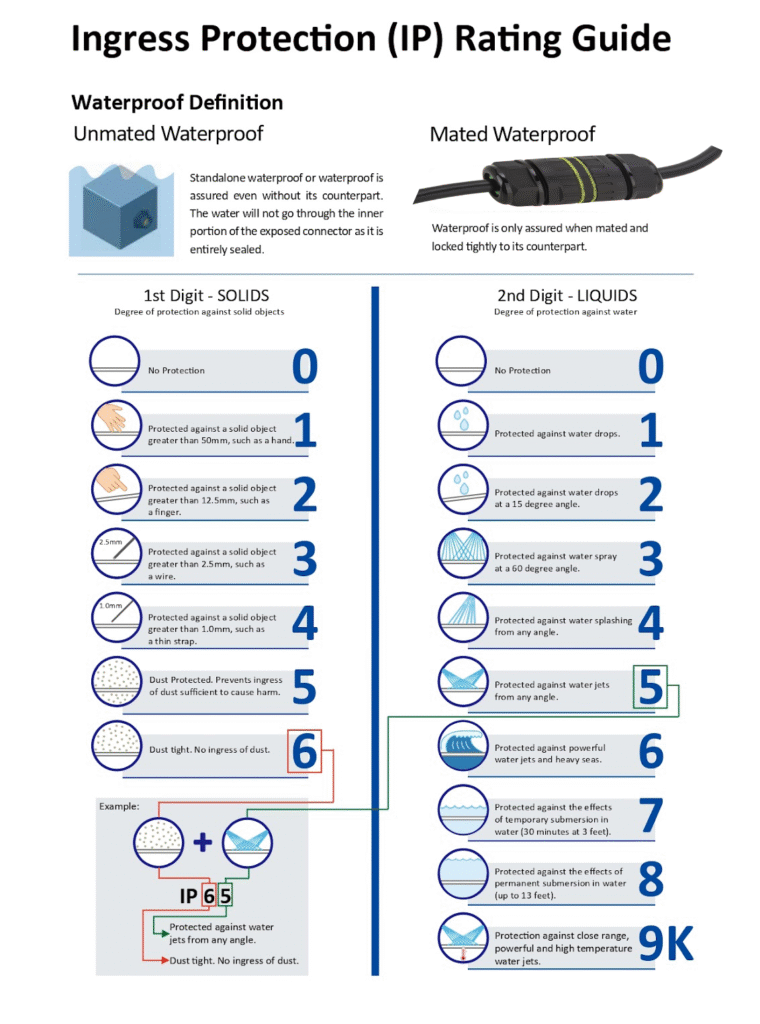
Key Takeaways:
- IP44: Standard outdoor protection for covered areas
- IP65: Withstands pressure washing and severe weather
- IP67: Survives temporary flooding up to 1 meter
- IP68: Continuous underwater protection
- Environmental factors dramatically affect rating requirements
What Does IP Rating Mean? (Complete Breakdown)
IP (Ingress Protection) ratings consist of two digits: The First digit (0-6) indicates solid object protection, the second digit (0-8) shows water resistance level.
Understanding IP Rating Numbers:
First Digit – Solid Object Protection:
- IP0X: No protection
- IP1X: Blocks objects >50mm (large body parts)
- IP2X: Blocks objects >12.5mm (fingers)
- IP3X: Blocks objects >2.5mm (tools, thick wires)
- IP4X: Blocks objects >1mm (small wires, screws)
- IP5X: Dust protected (limited dust entry allowed)
- IP6X: Dust-tight (complete dust protection)
Second Digit – Water Protection:
- IPX0: No water protection
- IPX1: Protected against vertical water drops
- IPX2: Protected against 15° tilted water drops
- IPX3: Protected against water spray up to 60°
- IPX4: Protected against water splashing from any direction
- IPX5: Protected against water jets (6.3mm nozzle)
- IPX6: Protected against powerful water jets
- IPX7: Protected against temporary immersion (1m, 30 minutes)
- IPX8: Protected against continuous submersion
Minimum IP Rating Requirements by Application
Choose your IP rating based on environmental exposure, not equipment cost.
IP Rating Selection Guide by Environment:
IP44 – Basic Outdoor Protection:
- Covered patios and porches
- Garden lighting under eaves
- Protected outdoor outlets
- Areas with light rain exposure only
IP54-IP65 – Moderate Weather Protection:
- Uncovered decks and patios
- Areas near sprinkler systems
- Equipment cleaned with garden hoses
- Locations with dust and dirt exposure
IP65-IP67 – Severe Weather Protection:
- Pressure washing environments
- Swimming pool areas
- Industrial outdoor locations
- Heavy storm exposure zones
IP67-IP68 – Extreme Conditions:
- Underwater installations
- Buried cable connections
- Marine/saltwater environments
- Flood-prone areas
IP65 vs IP67 vs IP68: Critical Differences Explained
Understanding these distinctions prevents costly installation failures.
IP65: Protects against water jets, not submersion IP67: Handles temporary submersion (1m/30min) IP68: Continuous underwater protection at manufacturer-specified depths
Detailed Comparison:
IP65 Specifications:
- Withstands 12.5 liters/minute water jets
- Survives pressure washing from 3 meters
- Zero water ingress during 15-minute test
- Cost: 20-30% less than IP67
- Ideal for: Deck lighting, outdoor signage
IP67 Specifications:
- Complete immersion protection to 1 meter
- 30-minute submersion guarantee
- Maintains seal integrity during temperature cycling
- Cost: 40-50% more than IP65
- Ideal for: Flood-risk areas, fountain edges
IP68 Specifications:
- Continuous submersion capability
- Typical depth rating: 1-3 meters
- Extended duration testing (24+ hours)
- Cost: 70-100% more than IP65
- Ideal for: Pool lights, underwater features
Why Indoor Equipment Fails Outdoors (Even with Protection)
Never use indoor-rated equipment outdoors – additional enclosures cannot compensate for improper materials and design.
Indoor vs Outdoor Equipment Differences:
Material Composition:
- Indoor: Standard PVC/ABS plastics
- Outdoor: UV-stabilized polymers with additives
Seal Design:
- Indoor: Basic compression seals
- Outdoor: Multi-barrier sealing systems
Drainage Features:
- Indoor: No drainage provisions
- Outdoor: Integrated weep holes and channels
Temperature Range:
- Indoor: 0°C to 40°C typical
- Outdoor: -40°C to 85°C required
Environmental Factors Affecting IP Rating Selection
Location-specific conditions determine actual protection requirements beyond standard ratings.
Regional Considerations:
Coastal/Marine Environments:
- Minimum IP67 recommended
- Stainless steel or marine-grade aluminum is required
- 316-grade stainless for direct salt exposure
- A monthly cleaning schedule is essential
- 50% shorter equipment lifespan expected
Cold Climate Requirements:
- Silicone gaskets maintain flexibility to -40°F
- Thermal cycling certification is required
- Drainage is critical to prevent ice damage
- Consider heated enclosures below -20°F
- Annual seal inspection recommended
Hot/Sunny Locations:
- UV-stabilized materials mandatory
- Light-colored housings reduce heat absorption
- Thermal expansion allowances are needed
- Inspection every 6 months for UV damage
- 30% faster degradation rate expected
Dusty/Sandy Areas:
- IP6X (dust-tight) rating minimum
- Positive pressure ventilation is helpful
- Sacrificial covers extend equipment life
- Quarterly cleaning schedule required
- Filter replacement every 3-6 months
AGX Quick-Connect IP68 Solution: Professional-Grade Protection
AGX quick-connect IP68 waterproof connectors install in 30 seconds without tools and exceed industry standards with a 4-meter depth rating for 168 hours.
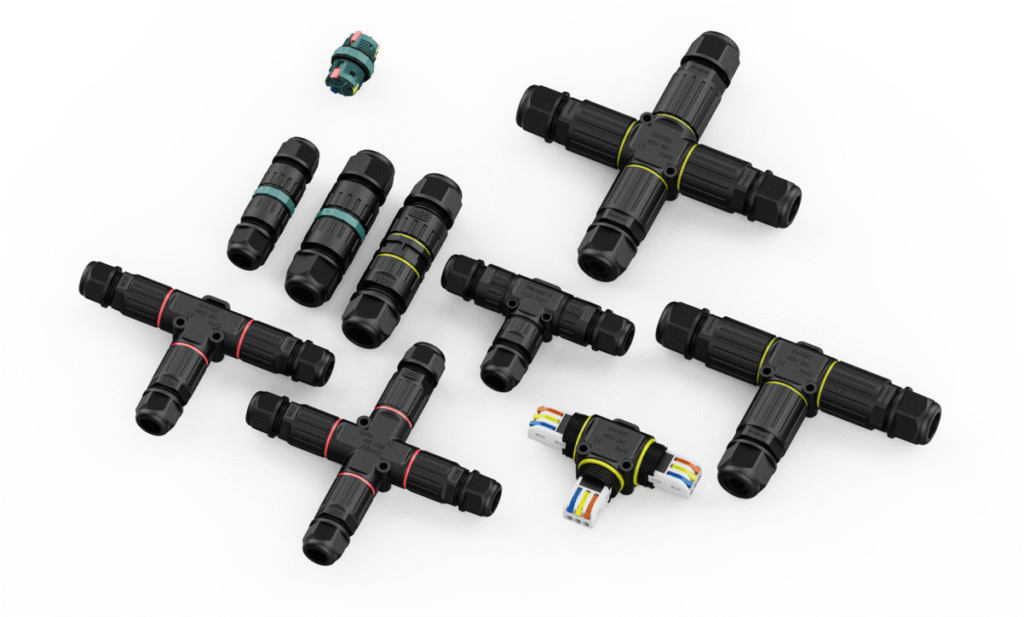
AGX Performance Advantages:
Superior Testing Standards:
- 4-meter submersion depth (vs. 1-3m industry standard)
- 168-hour continuous testing (vs. 24-hour standard)
- TUV and UL dual certification
- In-house laboratory validation
- 100% production testing protocol
Installation Benefits:
- 30-second tool-free installation
- 70% labor cost reduction
- No wire stripping required
- Reusable connections
- Color-coded for easy identification
Application Solutions:
- Sports Field Lighting: Quick maintenance and upgrades
- Flood Light Systems: Reliable high-power connections
- Architectural Lighting: Low-profile aesthetic design
- Industrial Applications: Chemical and pressure resistant
Cost Savings Analysis:
- Installation: 70% labor reduction
- Maintenance: 80% fewer callbacks
- Longevity: 3x standard connector lifespan
- Warranty: 5-year replacement guarantee
- ROI: Typically 12-18 months
Frequently Asked Questions
Q: Can I use IP65 for pool lighting?
A: No. Pool lighting requires an IP68 rating for continuous underwater use. IP65 only protects against water jets, not submersion.
Q: How often should I inspect outdoor connections?
A: Inspect IP44-IP65 connections annually, IP67-IP68 connections every 2 years, or after severe weather events.
Q: Does a higher IP rating always mean better?
A: Not necessarily. Higher ratings cost more and may be unnecessary. Match the rating to your specific environmental conditions.
Q: Can IP ratings degrade over time?
A: Yes. UV exposure, temperature cycling, and mechanical stress can degrade seals. Regular inspection ensures continued protection.
Conclusion: Making the Right IP Rating Choice
Selecting the correct IP rating ensures long-term reliability and cost-effectiveness for your outdoor project. Remember:
- IP44: Basic outdoor protection for covered areas
- IP65: Standard choice for exposed outdoor equipment
- IP68: Essential for underwater or extreme conditions
- Environmental factors: May require higher ratings than standard recommendations
- Professional solutions: AGX quick-connect systems reduce installation time and improve reliability
Choose wisely based on your specific conditions, not just minimum requirements. When in doubt, select one rating level higher than you think you need – the additional cost is minimal compared to replacement expenses from water damage.




